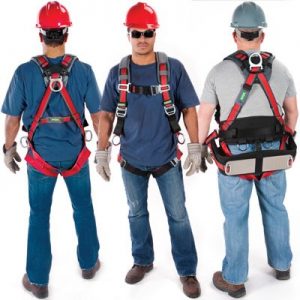In the world of agriculture, grain storage is a critical part of the process, ensuring the preservation of crops for extended periods. However, the maintenance of stored grains often involves fumigation to control pests and maintain quality. While fumigation is effective, it comes with inherent risks that demand meticulous attention to safety. Understanding and implementing stringent fumigation safety measures are paramount to safeguarding both the stored produce and the workers involved in the process.
Understanding Fumigation Safety
Fumigation safety encompasses a range of practices and protocols designed to mitigate risks associated with the use of fumigants in grain storage facilities. Fumigants, while effective against pests, can pose health hazards to humans if not handled correctly. Ensuring proper ventilation, equipment maintenance, and adherence to safety guidelines are crucial aspects of fumigation safety.
1. Prioritize Training and Education
The cornerstone of fumigation safety lies in comprehensive training. All personnel involved in the fumigation process must receive adequate training on handling fumigants, understanding safety protocols, and using personal protective equipment (PPE). KC Supply Co. provides educational resources and equipment to support safe handling practices, ensuring everyone involved is well-informed and prepared.
2. Utilize Recommended Equipment
Employing the right equipment is pivotal in ensuring fumigation safety. This includes gas detectors, respirators, protective clothing, and monitoring devices to measure fumigant concentrations. KC Supply Co. offers a range of high-quality safety equipment specifically designed for fumigation procedures, enabling workers to operate in a secure environment.
3. Implement Ventilation Systems
Proper ventilation is a key factor in minimizing fumigation risks. Adequate ventilation systems help disperse fumigant gases, reducing their concentration levels within the storage area. KC Supply Co. provides ventilation solutions tailored to grain storage facilities, ensuring optimal air circulation and safety for workers during fumigation processes.
4. Follow Strict Protocols
Adherence to strict protocols cannot be overstated in fumigation safety. This includes following manufacturer instructions for fumigant application, maintaining proper dosage, and adhering to recommended exposure times. Additionally, having emergency response plans in place in case of accidents or unexpected situations is crucial to mitigating risks.
Why Fumigation Safety Matters
Prioritizing fumigation safety isn’t just about compliance—it’s about safeguarding lives, preserving produce quality, and protecting the environment. By meticulously adhering to safety measures, grain storage facilities can ensure the well-being of their workers while maintaining the integrity of stored grains.
At KC Supply Co., we recognize the paramount importance of fumigation safety in grain storage operations. Our commitment is to provide the necessary resources, equipment, and guidance to support safe fumigation practices, empowering facilities to uphold the highest safety standards.
Conclusion
Fumigation safety isn’t an option; it’s an imperative practice in grain storage operations. By prioritizing training, using recommended safety equipment, implementing ventilation systems, and adhering to strict protocols, grain storage facilities can create a safer environment for their workers and ensure the efficacy of fumigation processes.
KC Supply Co. stands ready to assist grain storage facilities in enhancing their fumigation safety measures. Our comprehensive range of safety equipment and expert guidance are geared towards ensuring that fumigation processes are conducted with utmost care and precision.
Choose KC Supply Co. for your fumigation safety needs and prioritize the well-being of your workers and the quality of your stored grains.
Fumigation safety is not just a procedure—it’s a commitment to protection. Contact KC Supply Co. today to elevate your fumigation safety standards!





